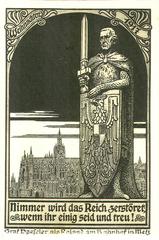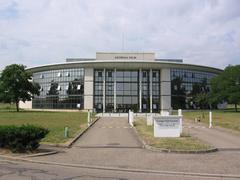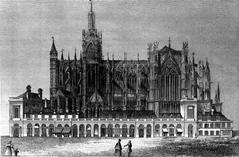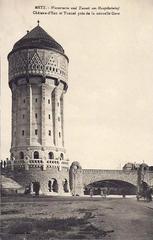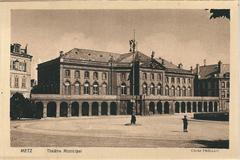
Prefecture Hotel of Moselle Metz: Visiting Hours, Tickets, and Historical Insights
Date: 04/07/2025
Introduction
The Prefecture Hotel of Moselle (Préfecture de la Moselle), located in the heart of Metz, France, stands as a testament to the city’s rich history, architectural grandeur, and enduring political significance. Originally built in the 18th century as the administrative seat for the royal intendant, the building has evolved through periods of French and German rule, war, and peace. Today, while serving as an active government building, it offers rare public access during special occasions such as the European Heritage Days. This comprehensive guide provides detailed information on the history, architectural highlights, practical visitor details, and tips for making the most of your visit to this iconic Metz landmark. For the latest updates and official visiting information, consult the Metz tourism website and the European Heritage Days portal.
Table of Contents
- Introduction
- Historical Background
- Architectural Highlights
- Visiting Information
- Tips for Visitors
- Frequently Asked Questions (FAQ)
- Visual Resources and Media
- Conclusion
- References and Further Reading
Historical Background
Origins and Early Development
The Hôtel de la Préfecture de la Moselle, known historically as the Hôtel de l’Intendance, was constructed between 1738 and 1742 under King Louis XV. Architects Jacques Oger and Barthélémy Bourdet envisioned a neoclassical edifice that would embody the authority of the French crown in the Moselle region (metz.fr). The building’s initial purpose was to serve as the residence and administrative headquarters of the royal intendant, making it a pivotal site for regional governance.
Evolution Through Turbulent Times
The Prefecture Hotel’s history mirrors Metz’s own, particularly during the city’s annexations by Germany (1871–1918, 1940–1944) and subsequent returns to France. The building endured significant events, including a fire in 1803, after which Napoleon I ordered its reconstruction, further solidifying its administrative role. Enhancements in the 19th century, such as sculptural decorations by Charles Pêtre, and sensitive modern renovations in the 20th century, have preserved its historic character while accommodating contemporary needs (Wikipedia: History of Metz).
Political and Cultural Role
Throughout its existence, the Prefecture Hotel has been at the center of Metz’s political, administrative, and ceremonial life. It remains the official residence of the prefect and hosts government events, commemorations, and public receptions. Its symbolic status as a bridge between French and German influences is evident in its art, architecture, and civic use (France Guide).
Architectural Highlights
Exterior Features
- Jaumont Stone Façade: The building features the iconic yellow Jaumont limestone, characteristic of Metz and lending the city its “luminous” reputation (The Crazy Tourist).
- Neoclassical Symmetry: The U-shaped layout, grand entrance, and harmonious proportions reflect Enlightenment ideals.
- Sculptural Details: The main entrance is adorned with a fronton displaying the coats of arms of Moselle’s arrondissements, and imperial eagles atop the porch symbolize Napoleonic authority (WikiMetz).
- Roof and Towers: The steep slate roof and dormer windows evoke both French and German administrative styles.
Interior Features
- Grand Staircases and Salons: Ornate moldings, period furnishings, and high ceilings highlight the building’s historic grandeur.
- Artistic Decor: Murals, tapestries, and woodwork blend classical, Empire, and Art Deco influences. The interior renovation by Robert Anxionnat in 1970 preserved historic elements while introducing modern touches (metz.fr).
- Commemorative Elements: A fountain from 1807 and plaques honor significant moments and figures in Metz’s history.
Visiting Information
Hours and Admission
As an active government building, the Prefecture Hotel of Moselle is generally not open to the public except during special occasions, most notably the European Heritage Days (Journées Européennes du Patrimoine), typically held in September. During these events:
- Admission is free. Advance registration may be required for guided tours.
- Check the official Metz tourism website and the European Heritage Days portal for up-to-date schedules and visitor information.
Guided Tours
- Guided tours are available only during special events such as the European Heritage Days.
- These tours provide historical context, access to grand salons, ceremonial rooms, and the central courtyard.
- Most tours are in French, but some guides may speak English or German.
Accessibility
- The building is located in a pedestrian-friendly city center.
- Some areas are accessible for visitors with reduced mobility, but due to the historic nature, full accessibility is not guaranteed. Contact the tourist office or event organizers in advance for specific accommodations.
- Public transport, including buses and trams, serves the area; the nearest stops are Opéra-Théâtre and Cathédrale.
Directions and Nearby Attractions
- Address: 9, place de la Préfecture, 57034 Metz CEDEX 1
- By Train: 1.5 hours from Paris Gare de l’Est by TGV.
- By Car: Accessible via A4 motorway; parking available nearby.
- Nearby Attractions:
- Metz Cathedral (Cathédrale Saint-Étienne): Renowned for its stained glass.
- Opéra-Théâtre de Metz: France’s oldest opera house.
- Place de la Comédie: Historic square adjacent to the prefecture.
- Musée de la Cour d’Or: Archaeological and art collections.
- Centre Pompidou-Metz: Modern and contemporary art museum.
Tips for Visitors
- Plan Ahead: Schedule your visit to coincide with public open days—usually during European Heritage Days.
- Combine Visits: Explore nearby attractions for a comprehensive Metz experience.
- Comfortable Shoes: The historic center features cobblestone streets.
- Photography: Exterior photography is encouraged; interior photography may be restricted.
- Respect Security Protocols: Bring ID and adhere to security checks during official events.
Frequently Asked Questions (FAQ)
Q: Can I visit the Prefecture Hotel of Moselle year-round?
A: No. Public access is limited to special events like European Heritage Days. Check official sources for dates.
Q: Is there an admission fee?
A: Admission is free during public open days.
Q: Are guided tours available?
A: Yes, but only during special events. Early registration may be required.
Q: Is the building accessible for visitors with disabilities?
A: Some areas are accessible, but full accessibility is not guaranteed due to the historic structure.
Q: What are nearby attractions in Metz?
A: Metz Cathedral, Opéra-Théâtre, Place d’Armes, Musée de la Cour d’Or, and Centre Pompidou-Metz.
Visual Resources and Media
- Explore virtual tours and image galleries on official tourism websites and travel blogs.
- For SEO optimization, ensure image alt-text includes phrases like “Prefecture Hotel of Moselle exterior,” “Metz historical sites,” and “Préfecture de Metz guided tours.”
- Maps and virtual itineraries are available on the Metz Tourist Office website.
Conclusion
The Prefecture Hotel of Moselle embodies centuries of Metz’s history, reflecting Franco-German heritage and architectural elegance. While public access is rare, special events such as the European Heritage Days unlock the doors to this remarkable landmark. Combine your visit with other historical sites in Metz and immerse yourself in the city’s vibrant cultural tapestry. For the most current information on visiting hours, guided tours, and accessibility, consult official sources and digital platforms like the Audiala app.
For more travel inspiration and insider tips, download the Audiala app and follow us on social media.


